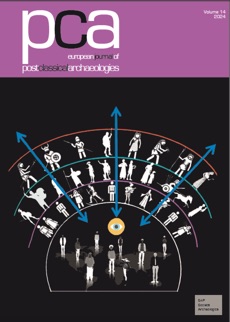Fortified Settlements of the 9th and 10th Centuries ad in Central Europe: Structure, Function and Symbolism
Hajnalka Herold
Medieval Archaeology: 56, (2012)
Abstract
The structure, function(s) and symbolism of early medieval (9th–10th centuries ad) fortified settlements from central Europe, in particular today’s Austria, Hungary, Czech Republic and Slovakia, are examined in this paper. It offers an overview of the current state of research together with new insights based on analysis of the site of Gars-Thunau in Lower Austria. Special emphasis is given to the position of the fortified sites in the landscape, to the elements of the built environment and their spatial organisation, as well as to graves within the fortified area. The region under study was situated on the SE border of the Carolingian (and later the Ottonian) Empire, with some of the discussed sites lying in the territory of the ‘Great Moravian Empire’ in the 9th and 10th centuries. These sites can therefore provide important comparative data for researchers working in other parts of the Carolingian Empire and neighbouring regions.
Fortified settlements were important centres in the later phases of the central European early Middle Ages (9th–10th centuries ad). Their study therefore constitutes an essential part of early medieval archaeology in this region. This paper examines fortifica- tions located in contemporary Austria, Hungary, Czech Republic and Slovakia. (See Fig 1 for the location of sites mentioned in the text.) It should be noted that research traditions have played a significant role in the relative emphasis placed on different aspects of early medieval archaeology in the regions concerned. Research in Austria and Hungary has mainly concentrated on cemeteries, while the excavation of fortified settle- ments has been a major concern of early medieval archaeology in the Czech Republic and Slovakia (united as Czechoslovakia until 1992).
Click here to read this article from Medieval Archaeology
da medievalists.net






